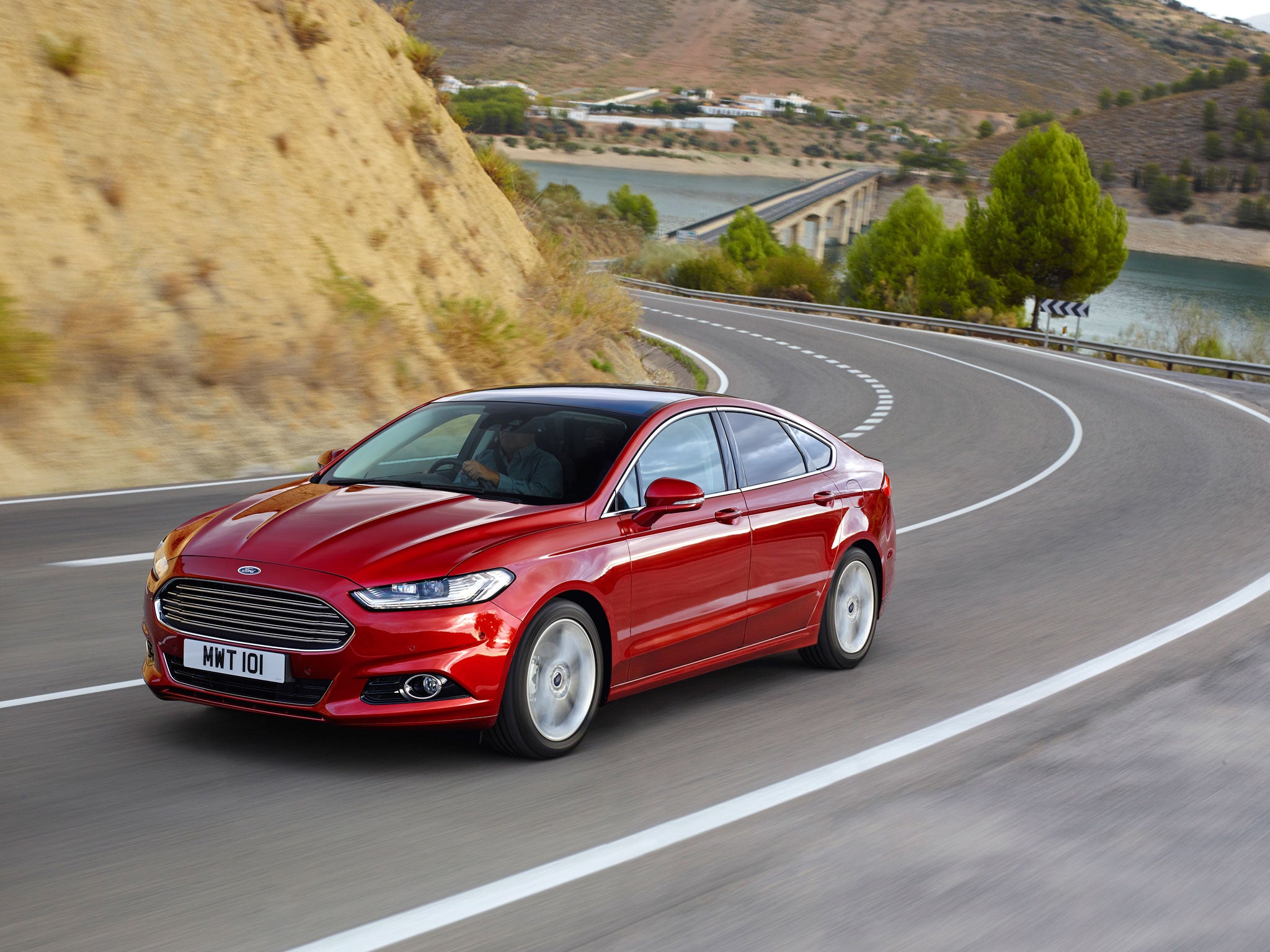Model Ford Mondeo Titanium 2.0 TDCi 180, motoring review: Mondeo Man strikes back
Can Ford's new model overtake more premium rivals, asks John Simister

Your support helps us to tell the story
From reproductive rights to climate change to Big Tech, The Independent is on the ground when the story is developing. Whether it's investigating the financials of Elon Musk's pro-Trump PAC or producing our latest documentary, 'The A Word', which shines a light on the American women fighting for reproductive rights, we know how important it is to parse out the facts from the messaging.
At such a critical moment in US history, we need reporters on the ground. Your donation allows us to keep sending journalists to speak to both sides of the story.
The Independent is trusted by Americans across the entire political spectrum. And unlike many other quality news outlets, we choose not to lock Americans out of our reporting and analysis with paywalls. We believe quality journalism should be available to everyone, paid for by those who can afford it.
Your support makes all the difference.Price: £24,245 hatchback; £25,495 estate
Engine: 1,997cc, four cylinders, 16 valves, turbodiesel, 180bhp
Transmission: six-speed gearbox, front-wheel drive
Performance: 140mph, 0-62 in 8.3sec, 64.2mpg, CO2 115g/km
You don't see Ford Mondeos so often these days. Big, family-size cars such as this now have to wear a "premium" badge, it seems, which is why rivals models from BMW, Audi and Mercedes all outsell this distant descendant of the ubiquitous Cortina. Even Vauxhall's Insignia and VW's Passat outsell the Mondeo, which must hurt Ford even more.
So why does Ford bother if the car market has changed so much? It bothers, because its "One Ford" policy means it can sell nearly identical versions of its cars all over the world.Its American Fusion model has spawned the new Mondeo here. So, what has changed between the outgoing third and incoming fourth generations of the model range which, 20 years ago, reinvented Ford as the maker of cars better to drive than most of its rivals?
The last Mondeo was hefty, bigger even than the old Granadas; the new one is a similar size outside and in. The styling is little different but for a prominent radiator grille with a face uncannily like an Aston Martin's. Inside, higher-quality materials and finish are, as always, claimed, but the design is fussy, the fit of the plastic halves of the steering column's surround is appalling, and the display screen's graphics are cluttered and unsophisticated. The voice-control function, meanwhile, is more trouble than it's worth. New rival Passat is a lot more appealing, and qualifies as "premium". The Mondeo doesn't.
Why, then, would I choose a Mondeo over a Passat or, indeed, an Audi A4? Well, Mondeos have always been a delight to drive, especially the third one, and the new one maintains the standard. Like most new cars, it has fuel-saving electric power-steering, but it has not taken away from the smoothness and precision of the previous Mondeo.
It moves along with a similarly fluent motion, too, communicating rather better than the German cars what is happening under the wheels and giving the driver a more interesting time. Despite its suppleness, the Mondeo makes you feel properly involved in the dynamic process, if you want to be, and therein lies its pleasure.
New engines on offer include a 1.5-litre, turbocharged petrol unit of great smoothness and admirable energy thanks to its 160bhp. Next year, both a 210bhp, 2.0-litre turbodiesel and, remarkably, a 125bhp, three-cylinder, turbocharged engine of only one litre (as seen in the Fiesta and Focus) will join the range. The thought of such a tiny engine hauling a massive Mondeo shows just how far the motor industry's downsizing drive has come.
I tried the 1.5-litre motor and the smooth and energetic 180bhp, 2.0-litre turbodiesel, which will probably be the most popular option. I also tried the imminent Mondeo hybrid, the only car in the range with a four-door saloon body (otherwise it's a five-door hatchbacks or capacious estate car). At 99g/km, its official CO2 output isn't quite as low as the most economical diesel's, but it offers hybrid motoring – it feels like a sportier Toyota Prius to drive – for the same purchase price as a 150bhp turbodiesel automatic.
And all of them have rear seatbelts that inflate instantly in an accident, acting as long, thin airbags. Now that is a first.
Join our commenting forum
Join thought-provoking conversations, follow other Independent readers and see their replies
Comments